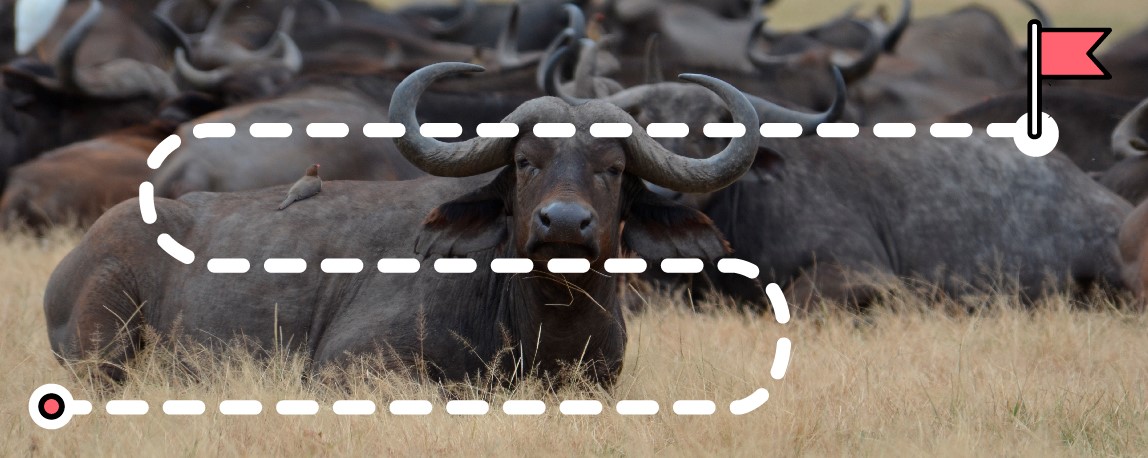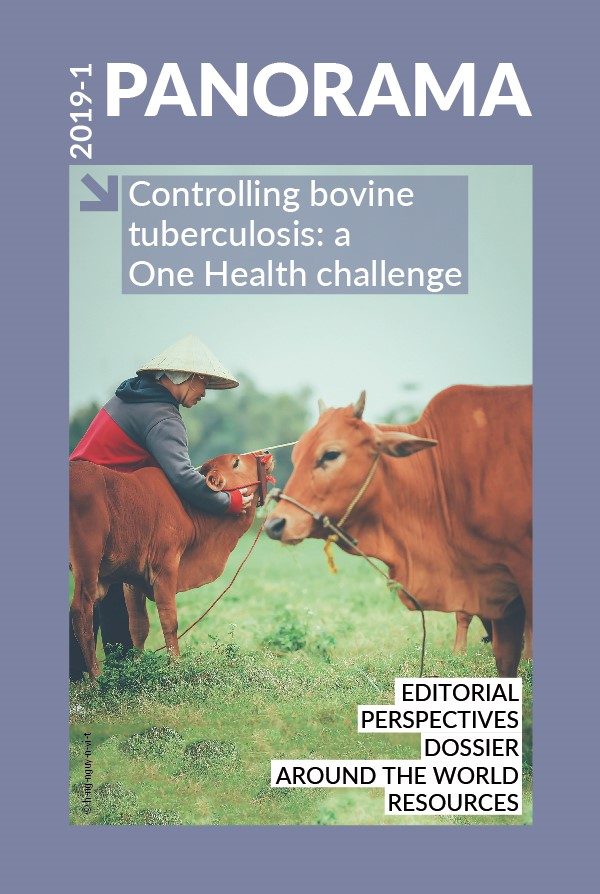Dossier Posted on 2019-04-29 14:21:40
Clear thinking is required to establish a national strategy for bovine tuberculosis control
Keywords
Authors
Matthew Stone, Deputy Director General, International Standards and Science, World Organisation for Animal Health (OIE).
It is critically important to establish strategic objectives for a national control programme, because they underpin the activities of the programme. For bovine tuberculosis, these could be:
- to protect public health, since bovine tuberculosis is a zoonosis
- to minimise its impact on animal production through reducing herd prevalence, thereby contributing to the profitability of the agricultural sector
- to build domestic and international consumer confidence in animals and animal products produced under effective animal health and food assurance systems
- to progressively pursue compartmental(1), zone(2) or national eradication, when it makes sound economic sense to do so.
The pathways of exposure from animals to humans are well known, but also have cultural specificity that must be acknowledged and managed. Managing the public health risk of exposure through the food chain primarily involves Veterinary Services establishing effective meat hygiene systems, incorporating ante- and post-mortem inspection, and implementing disposition rules for suspicious lesions. Exposure through milk and milk products is effectively managed by pasteurisation; however, alternative approaches must be developed to manage the risks associated with traditional and more recent cultural practices that oppose pasteurising dairy products. Public health risks associated with the occupational exposure of livestock owners and handlers require awareness campaigns and support for best practices.
Animal health programmes that focus on herd health, promoting biosecurity for free herds and prevalence reduction for infected herds, are well known to regulatory veterinarians and their epidemiology advisors, and have proven successful. The test-and-slaughter approach requires herd registration (or, better still, a system providing individual animal identification and traceability); regular screening and confirmatory diagnostic protocols; and epidemiologically sound practices for investigating cases (defining an infection and infectivity timeline, undertaking tracing, investigating at-risk herds). In situations where Veterinary Services lack the capacity for such actions, vaccination can be a useful alternative, particularly in the early stages of a national programme. It can drive down the prevalence of bovine tuberculosis to a level where ‘test and slaughter’ makes economic sense. Similarly, it can be a challenge to understand those factors and scenarios (which typically occur in limited situations and during the later stages of a programme) that indicate that a stamping-out approach would make better sense. In cases where animals are destroyed, condemned at slaughter or downgraded, fair compensation policies will support the implementation of a stamping-out policy, although they must not incentivise poor biosecurity practices or, worse, illegal or unethical behaviour. The farming community must support the goals of the programme and understand the approach.
The involvement of wildlife presents a particular challenge
The involvement of wildlife in bovine tuberculosis maintenance and the re-exposure of livestock presents a particular challenge. Research must establish the species involved, their demography and ecology, the mechanisms of infection and exposure, and how these can be interrupted, such as through vaccination or, if necessary, wildlife population control.
A national policy of zoning can support targeted risk management, both in the control mechanisms applied for herds and wildlife (e.g. frequency of herd testing, wildlife population management) and in managing the risk of further exposure and disease spread (e.g. movement control policies based on regional prevalence or the risk of wildlife exposure). Zoning may also support export trade assurance.
A sustained commitment from all stakeholders will support a step-by-step approach
Policy-makers and funders expect an economic rationale to support their decisions. The ultimate disease control objective of eradication may seem natural to veterinarians if it is epidemiologically feasible, but must also be justified economically, considering fiscal and other legitimate policy considerations. Eradication is an ambitious long-term goal, that will require planning a phased approach, building on the lessons learned from implementation in compartments (e.g. semen collection centres, high-biosecurity feedlot operations) and zones selected for their strategic significance and technical feasibility. A sustained commitment from all stakeholders to a long-term plan, involving regular strategic review, will support a step-by-step approach: moving systematically through prevalence reduction by vaccination, then test and slaughter, the potential ramping up of surveillance to demonstrate freedom, and using stamping-out to accelerate the final stages, as required. Technical capacity must be established to address the challenges that arise at every step of the way, from planning, to implementation, to monitoring and evaluation.
With the Roadmap for Zoonotic Tuberculosis, the building blocks are identified and will be progressively put in place to bring to bear that vital international commitment. Such commitment must support each Member Country as they embark on and sustain a national programme suited to their circumstance. Success in controlling bovine tuberculosis requires clear thinking and careful planning, starting with designing a programme based on agreed strategic objectives.
________________________________________
(1) ‘compartment’ means an animal subpopulation contained in one or more establishments, separated from other susceptible populations by a common biosecurity management system, and with a specific animal health status with respect to one or more infections or infestations for which the necessary surveillance, biosecurity and control measures have been applied for the purposes of international trade or disease prevention and control in a country or zone. [5]
(2) ‘zone’ means a part of a country defined by the Veterinary Authority, containing an animal population or subpopulation with a specific animal health status with respect to an infection or infestation for the purposes of international trade or disease prevention or control. [5]
http://dx.doi.org/10.20506/bull.2019.1.2915
References
- World Health Organization (WHO), World Organisation for Animal Health (OIE) & Food and Agriculture Organization of the United Nations (FAO) (2017). – Roadmap for Zoonotic Tuberculosis.
- World Organisation for Animal Health (OIE). – Bovine tuberculosis.
- Seventh International Conference on Mycobacterium bovis, 2020, Galway, Ireland.
- Organisation for Economic Co-operation and Development (OECD) (2012). – Recommendation of the Council on Regulatory Policy and Governance.










